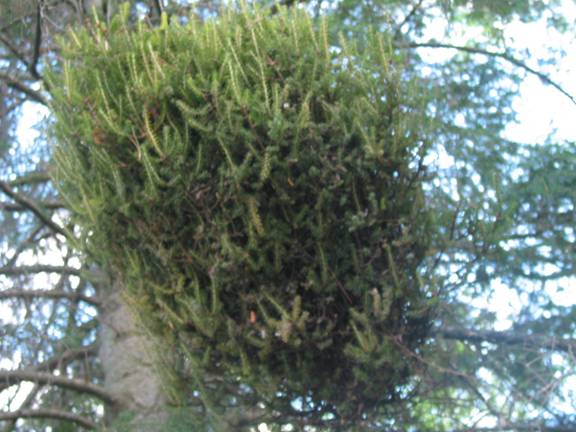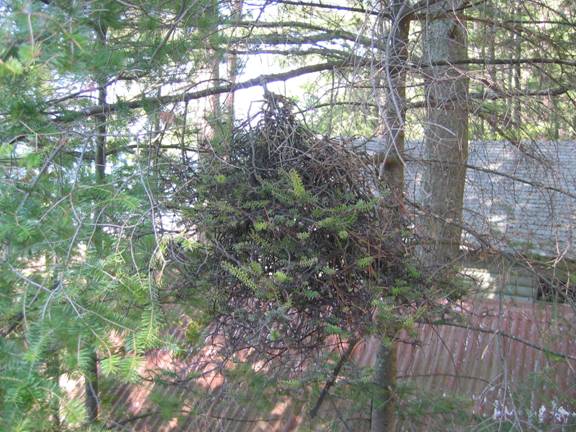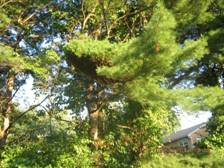Chair:
- Bruce Carlson
Members:
|
|
2018 E & E Committee Meeting Calendar
All E & E Committee Meetings are held at 9:00am at the Carlson’s cabin: 5106 Lower Ten Mile Lake Road.
- Friday, June 1, 2018
- Friday, TBD, 2018
- Friday, August 31, 2018
Contents
- Ten Mile Lake Final 2017 Report
- 2016 State of Water Conference
- RMB 2015 Report
- Witch’s Broom
- Swimmer’s Itch
- Hazardous Waste Disposal
- Swimmer’s Itch Survey
- Lake Temperature & Oxygen Data
- Water Quality Summary
- Secchi Disc Readings
- Aquatic Vegetation Survey
- Click here to see the Minnesota Pollution Control Agencies draft 2008 Report of Ten Mile Lake.
Ten Mile Lake Final 2017 Report
Click here to vew the report in .pdf format.
2016 State of Water Conference
On April 14-15, 2016, a “State of Water” conference was held by Conservation MN, U of M Extension & Freshwater Society. Bob Iversen and Mary Ackerman took the
following notes and highlighted some key issues for the Ten Mile Lake Association.
2016 State of Water Conference – Notes by Bob Iversen (AIS Sessions)
2016 State of Water Conference – Notes by Mary Ackerman
RMB Report
RMB Labs 2015 Ten Mile Lake Report
Witch’s Broom
Witch’s Brooms and Other Strange Things on Trees
by Bruce Carlson
Earlier this summer, Chuck Kruger found a strange growth in one of his spruce trees. From a distance, it looked almost like a squirrel’s nest, but up close, it turned out to be something quite different. It turned out to be dwarf mistletoe, a common parasite of conifer trees. Many people are not aware of these growths, but they are not uncommon in northern Minnesota, especially in pine and spruce trees.

Photo by Chuck Kruger
Dwarf Mistletoe
Dwarf mistletoe (above photo) is a parasitic plant and a member of the same family as the mistletoe that is kissed under at Christmas time. It is a major scourge of Western pine and spruce forests and weakens infected trees by absorbing water and essential nutrients that would otherwise nourish the tree. In addition to its own brownish-green woody shoots that project from the infected part of the tree it often stimulates the tree itself to produce dense masses of shoots that take on the form of witch’s brooms (see below). A unique feature of the dwarf mistletoe is its mode of seed dispersal, which is accomplished by a water-pump seed ejection system that can propel a seed over 20 yards at a speed of 60 mph. These seeds then further infect the host tree or neighboring trees. Seed ejection occurs in late summer. Although dwarf mistletoe isn’t a great problem around Ten Mile, removing infected branches can improve the health of the tree and help to prevent the spread of the disease.

Dwarf mistletoe showing a tangle of shoots
Photo by Bruce Carlson
Witch’s Broom

Photo from Village Garden Web
Witch’s broom is the name given to a dense outgrowth of shoots or terminal branches in a wide variety of coniferous and other types of trees, such as willows. In the photo above, the dense mass of small pine branches is a large witch’s broom. These structures, which are almost like tree tumors, are due to excessive localized branching. This can be the result of infections of the trees by agents as diverse as aphids, mites, fungi, bacteria-like infections or dwarf mistletoe. Normally most plants produce at their growing tips inhibitory substances,
which prevent sprouting from the nearest leaves or branch points. If these substances are inactivated or removed, then nothing stops the formation of lots of new branchlets near the tip. (This is the principle behind pinching off early buds of chrysanthemum plants to get denser masses of flowers.) Somehow, the agents mentioned above seem to interfere with these branching inhibitors,
and as a result there is a local uncontrolled growth of shoots sometimes taking on the appearance of a witch’s broom – hence the name. Some horticulturists take witches brooms from pine trees and graft them onto other stems to produce dwarf ornamental trees.
Swimmer’s Itch
Click here to see the maps and to access the Swimmer’s Itch survey.
Hazardous Waste Disposal
by Bob Iverson, Environment & Ecology Committee Member
Over my years at Ten Mile, I’ve accumulated quite a few burned out fluorescent bulbs, dead batteries, cans and bottles of old paint, gas etc. that need proper disposal. We all know that it isn’t environmentally friendly (or legal) to put these hazardous leftovers in the garbage or dump them in the woods – but what are we supposed to do? The answer is: it depends on exactly the item is. The Cass County Environmental Services Department website (http://www.co.cass.mn.us/esd/home_esd.html) has a wealth of information scattered across a number of web pages, and I’ve tried to distill this into the following summary. If any of this is unclear, I suggest checking the website above or calling the County Environmental Services Department (first floor, County Courthouse, Walker) at (218) 547-7241.
Oil, Oil Filters, Anti-Freeze
These items can be disposed of for free in marked barrels at the Hackensack Transfer Station. You cannot dispose of gasoline at the Transfer station (see Other Hazardous Waste, below).
Fluorescent Bulbs
Fluorescent bulbs and other mercury-containing devices (thermostats, thermometers) can be disposed of at the Hackensack Transfer Station or fluorescent bulbs only at the Walker Ace Hardware store. (Ace may charge a recycling fee.)
Batteries
Batteries are more complicated to get rid of properly, because the disposal location depends on the type of battery:
- Lead-Acid Automotive and Marine batteries can go to the Walker / Hackensack Transfer Station.
- Alkaline batteries (AA, AAA, C, D and 9 volt cells that have “alkaline” on the label can be disposed of in the household trash.
- Mercury (button) batteries from watches, hearing aids and cameras can be disposed of at the Walker / Hackensack Transfer Station, many pharmacies and hardware stores, the County Hazardous Waste Facility in Pine River or the County Environmental Services Department in Walker.
- Lithium batteries used in some cameras and watches need to be brought to the County Environmental Services Department in Walker.
Other Household Hazardous Waste
This category includes just about anything not mentioned above, including gasoline, paint, varnish, stain, solvents, aerosol products, drain cleaners and mothballs. All of these materials can be disposed of at the County Hazardous Waste Facility in Pine River. There is no charge, but an appointment is necessary – call (218) 587-3455 or (888) 910-2425, ext. 2.
During the summer months, Cass County operates several Mobile Household Hazardous Waste Disposal events – check with the Pine River facility for dates and locations.
The following table summarizes where to dispose of each type of hazardous waste:
| Waste Type | Disposal Locations | |||||
| Garbage | Hackensack Transfer Station | Environmental Services Department (Walker) | Household Hazardous Waste Facility (Pine River) | Walker Ace Hardware | Pharmacy | |
| Oil, filters, antifreeze |
X |
|||||
| Fluorescent bulbs |
X |
X |
||||
| Lead acid batteries |
X |
|||||
| Alkaline batteries |
X |
|||||
| Mercury batteries |
X |
X |
X |
|||
| Lithium batteries |
X |
|||||
| Other (paint, gas, cleaners, etc.) |
X |
|||||
Ten Mile Lake Temperature Readings
Click here to see the lake temperature and oxygen readings.
Ten Mile Lake Secchi Disc Readings
Click here to see the lake Secchi Disc readings.